Description
Name in North American Boletes: Boletus pulcherrimus
Genus: Rubroboletus
- Genus 2: Boletus
- Genus 3: Suillellus
Species: pulcherrimus
Common Name: Satan’s Bolete
- Common Name 2: Red-Pored Bolete
Tells: Big, beefy mushroom w/red (dark, orange, or brownish) instantly-bluing pores. Blue-bruising reddish stem has red netting. Yellow, quick-bluing cap flesh.
Other Information: Usually found in West Coast coastal areas. Cap is usually reddish, but may range from olive-brown to grayish, though it’s almost always got pink or red by the edge. Cap may crack in age. Likes oak.
Science Notes: DNA testing moved this mushroom into the newly erected genus “Rubroboletus.” NOTE: This is the “Bad News Boletes” genus that includes many of the worst sick-makers. Red flags should go off when you see it. The other West Coast members are:
- Eastwoodiae (f/k/a satanas), typically found in coastal CA.
- Haematinus, the mountain red pored bolete;
- Amygdalinus, the other oak loving red pored bolete.
Edibility: AVOID! The most dangerous mushroom on the list. A 1994 death was linked to the GI distress!
CHEMICAL TESTS:
- NH4OH (Ammonia): No data.
- KOH: No data.
- FeSO4 (Iron Salts): No data.
Links:
 |
0 |  |
0 |  |
143 |


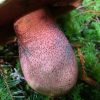
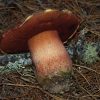
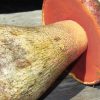
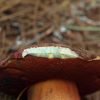
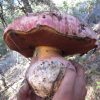
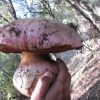
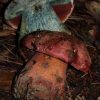

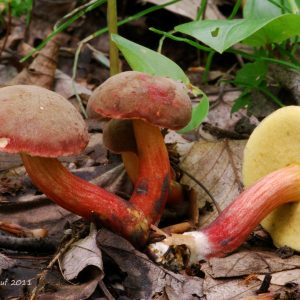
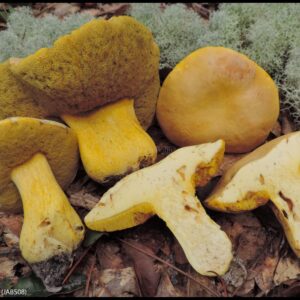

Got something to discuss?